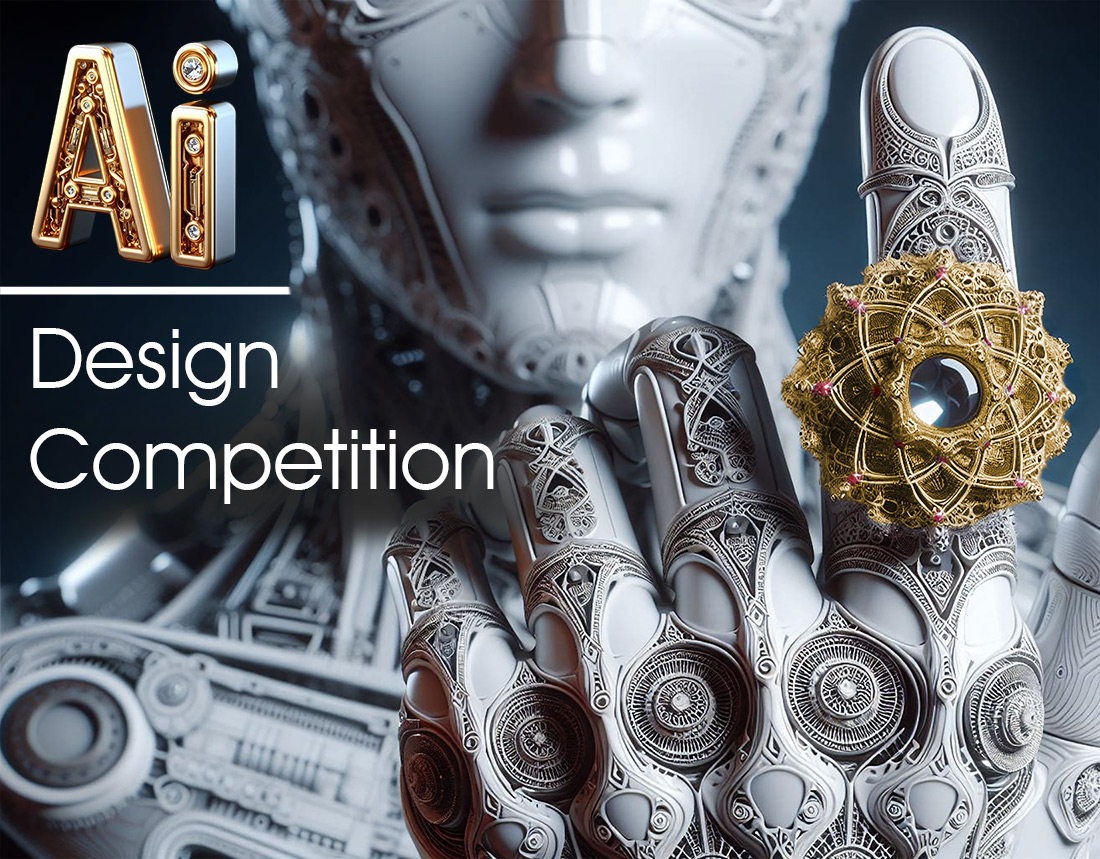Jewellery Design Guides and Brand Insights
Using AI to Generate Jewelry Images
Jennifer Olson
July 04, 2025Jewelry design has always been a blend of artistry, craftsmanship, and innovation. Traditionally, artisans would sketch their ideas on paper, refine them with feedback, and then transform them into physical pieces. Today, technology is changing every aspect of this process—including how designs come to life visually. One of the most exciting developments is the use of artificial intelligence (AI) to generate jewelry images. This isn’t just a trend; it’s reshaping the jewelry industry in ways both big and small.
How AI is Changing Jewelry Visualization
AI-powered image generation tools have made it possible to create stunningly realistic jewelry visuals without ever touching a gemstone or metal. Designers can now visualize their ideas instantly, test different variations, and share concepts with clients before any materials are used.
Here’s how the process typically works:
- Input & Inspiration: The designer provides prompts—these could be sketches, descriptions, or reference images. For example, “rose gold ring with emerald centerpiece and art deco motif.”
- AI Image Generation: Using advanced models (like Midjourney, DALL-E, or custom-trained networks), the AI interprets these prompts and produces high-resolution images of jewelry pieces.
- Iteration & Refinement: Designers can tweak the prompt or adjust parameters (color, shape, gemstones) to instantly see new versions of their idea.
- Final Selection: Once the designer is happy with a generated image, they can use it as a reference for CAD modeling or client presentations.
Advantages of Using AI for Jewelry Image Generation
Speed and Efficiency
Creating jewelry images by hand or even using traditional 3D rendering software such as Keyshot can be time-consuming. AI tools dramatically speed up this process. What used to take days can now be done in minutes. Designers can brainstorm and iterate rapidly, which is invaluable in a creative field where trends can change overnight.
Cost-Effectiveness
Photographing physical prototypes or commissioning 3D renders can be expensive. AI-generated images provide a cost-effective way to visualize designs without the need for materials or specialized equipment. This also lowers the barrier for independent designers and small businesses.
Enhanced Creativity
AI can combine design elements in unexpected ways, offering fresh inspiration for designers. Sometimes the algorithm generates ideas that a human might not have considered—a cluster of stones in a novel arrangement, or an unusual interplay between metals and gems. Designers can use these “happy accidents” as jumping-off points for new collections.
Customization and Personalization
With AI, creating bespoke designs for clients becomes much easier. A designer can input a customer’s preferences—favorite colors, birthstones, styles—and instantly generate several options for review. This level of personalization helps engage clients and makes them feel part of the creative process.
Realistic Visualization
Modern AI models can produce photorealistic images that accurately mimic lighting, textures, and reflections. Clients get a true sense of what their jewelry will look like before anything is made. This reduces misunderstandings and increases satisfaction.
Practical Applications in the Jewelry Industry
Design Prototyping
Before committing to expensive materials, designers and brands can use AI-generated images to test market reactions, gather feedback, or even crowdfund new collections with visuals alone.
Marketing and E-commerce
Online jewelry stores often rely on high-quality visuals to attract buyers. AI-generated images allow for rapid creation of product catalogs—including “virtual try-on” features where customers can see how a piece might look on them.
Heritage Restoration
AI can help reconstruct lost or damaged historical jewelry by generating images based on old photos, descriptions, or similar surviving pieces. This aids museums and collectors in preserving cultural heritage.
Social Media Content
Jewelry brands need fresh content to keep their social media feeds engaging. AI image generators can quickly produce themed visuals for holidays, trends, or seasonal campaigns.
Challenges and Considerations
While the benefits are clear, there are some challenges to keep in mind:
- Accuracy: AI-generated images look real but aren’t always physically accurate. A design might look beautiful in a picture but be impossible to craft with real materials.
- Intellectual Property: As with other creative fields, there are questions about copyright and originality when using AI-generated designs.
- Skill Integration: While AI enhances creativity, it doesn’t replace the need for experienced jewelers who understand materials, manufacturing limits, and customer preferences.
The Human Touch Remains Essential
AI is a tool—a powerful one—but the heart of jewelry design remains human creativity and craftsmanship. The best results come when designers use AI as an assistant: generating ideas quickly, visualizing possibilities, and refining concepts before moving to traditional techniques like CAD modeling or handcrafting.
Getting Started with AI-Generated Jewelry Images
If you’re interested in exploring this technology:
- Experiment with Public Tools: Platforms like Midjourney or DALL-E offer easy ways to start generating images from text prompts.
- Train Custom Models: For unique aesthetics or brand consistency, some companies develop their own models using proprietary data sets.
- Integrate with Existing Workflows: Use AI-generated images alongside CAD software or traditional sketching to enhance your design process.
- Stay Ethical: Be transparent about using AI in your process and respect intellectual property rights.
The Future of AI in Jewelry Design
As AI continues to improve, we can expect even more lifelike images—complete with animated effects, interactive 3D views, and real-time customization for clients online. Virtual reality (VR) and augmented reality (AR) experiences powered by AI will let customers “try on” jewelry virtually before buying.
But perhaps most exciting is how accessible design has become. Whether you’re an established jeweler or a hobbyist dreaming up your first collection, AI-generated images let you bring your imagination to life faster than ever before.
Final Thoughts
The marriage of technology and tradition is pushing jewelry design into a new era—one where creativity knows no boundaries and every idea can be seen before it’s made. If you haven’t tried using AI-generated jewelry images yet, now is the perfect time to start shaping the future of design.
All Tags
